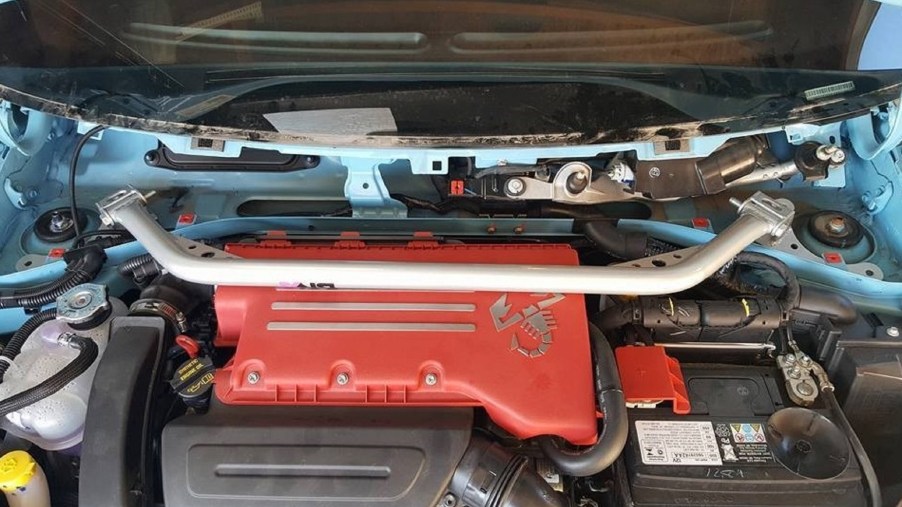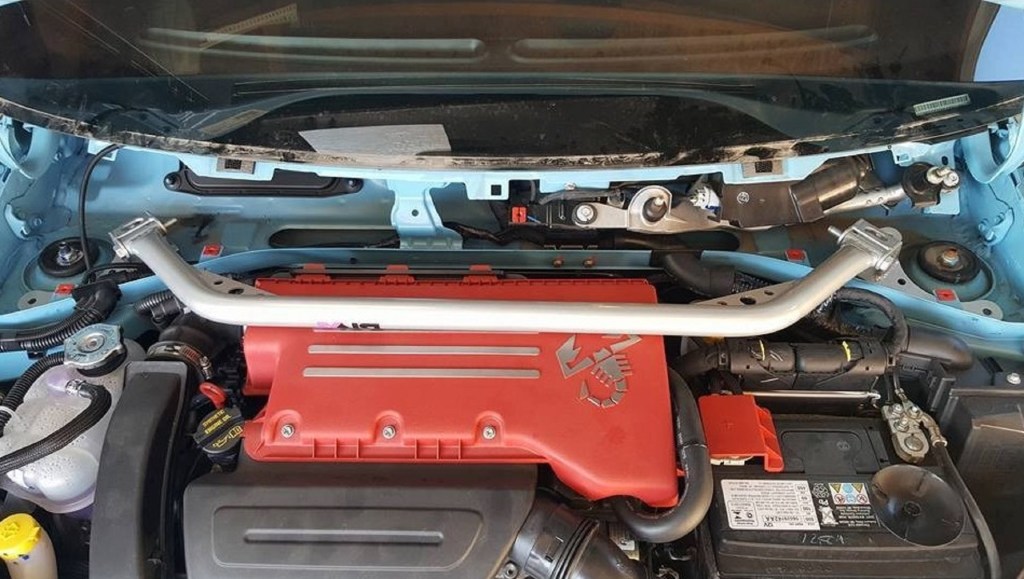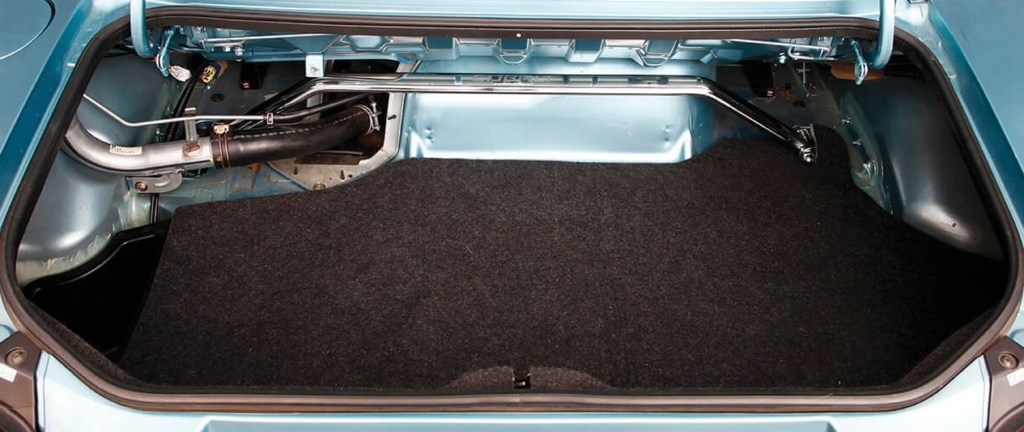
Should You Give Your Car a Strut-Tower Brace?
Modifying your car’s suspension can offer noticeable ride and handling benefits…if it’s done correctly. Some modifications may look good but do little if anything to make your car turn quicker or ride smoother. Others can actively ruin your car or make it downright unsafe to drive. However, even if a mod is genuinely supposed to improve your car, it’s not always worth the investment. So, is installing a strut-tower brace one of those mods?
What is a strut-tower brace for?

Although it’s also known as a strut bar, a strut-tower brace is not the same thing as a sway bar (aka ‘anti-roll bar’). True, strut-tower braces, aka ‘shock-tower braces,’ are technically suspension modifications in that they attach to suspension components. However, they don’t improve handling in the same way that stiffer sway bars do. Instead, strut bars are more like roll cages or roll bars in that they really modify your car’s chassis.
Here’s how it works. Most cars with independent suspension, whether or not they have coilovers, have what are known as MacPherson strut assemblies. A MacPherson strut is a three-piece design that connects the wheel to the chassis and the steering system using a vertical damper, aka the shock absorber, CarThrottle explains. And the section where the top of the shock bolts to the car’s chassis is called the shock tower/strut tower.
MacPherson struts have several positive attributes, CarThrottle says. They’re cheap, strong, relatively light, and don’t take up much space. However, they’re not as adjustable as double wishbones, and their geometry varies more during cornering. What’s more, because of its design, a MacPherson strut imparts a twisting force on the strut tower during cornering. This creates chassis flex, which spoils how your car reacts and handles, CarThrottle explains.
This is where the strut-tower brace comes in. Made of metal and/or carbon fiber, strut bars are literal bars that bolt to and connect opposite shock towers. This strengthens them and redistributes the forces generated during cornering. The end result is less chassis flex and more consistent geometry, which translates to more predictable handling and a more “playful” car, Low Offset says. Plus, sharper turn-in, CarThrottle adds.
How much does it cost?

While the costs vary from car to car, strut bars are fairly inexpensive in general. For example, a stainless-steel Cobalt rear shock-tower brace for the NA and NB Miata costs $110. And a carbon-steel DNA Racing front brace for a Fiat 500 Abarth costs just over $260. Carbon-fiber ones, though, are generally more expensive than metal ones.
As far as installation is concerned, strut-tower braces are a common DIY project. Depending on the car, it may require modifying or temporarily moving some plastic trim as well as adding some brackets. And some strut bars also require drilling and/or passing through pre-existing holes with a drill. But the installation process mostly just involves tightening a few bolts.
Is getting a strut bar worth it?
It’s worth noting that not every brace bar is a true strut-tower brace. Some bars attach to other points on the chassis and claim to improve the stiffness. However, unless the bar bolts to the shock towers, it’s not a genuine strut bar.
In addition, some cars already come from the factory with strut bars, even cars with double-wishbone suspensions. My old NB Miata had one as standard, for example. And if it’s already a standard item, further modification isn’t strictly necessary.
But should you install one on a car that doesn’t already have one? In short, it depends. Older and classic cars, such as muscle cars, often benefit from strut-tower braces, especially in conjunction with other suspension upgrades, Drifted notes. That’s not to say a modern car, such as a hot hatch, won’t also see improvements from an aftermarket strut bar. However, if your car is already stiff and has a crowded engine bay, installing one likely won’t be worth it.
Generally speaking, while these braces are inexpensive, you’re better off upgrading your sway bars or shocks first, Drifted says. Strut bars offer more marginal improvements that are better left towards the end of a build as finishing touches. Installing one won’t hurt your car, but it shouldn’t be your first priority.
Follow more updates from MotorBiscuit on our Facebook page.


